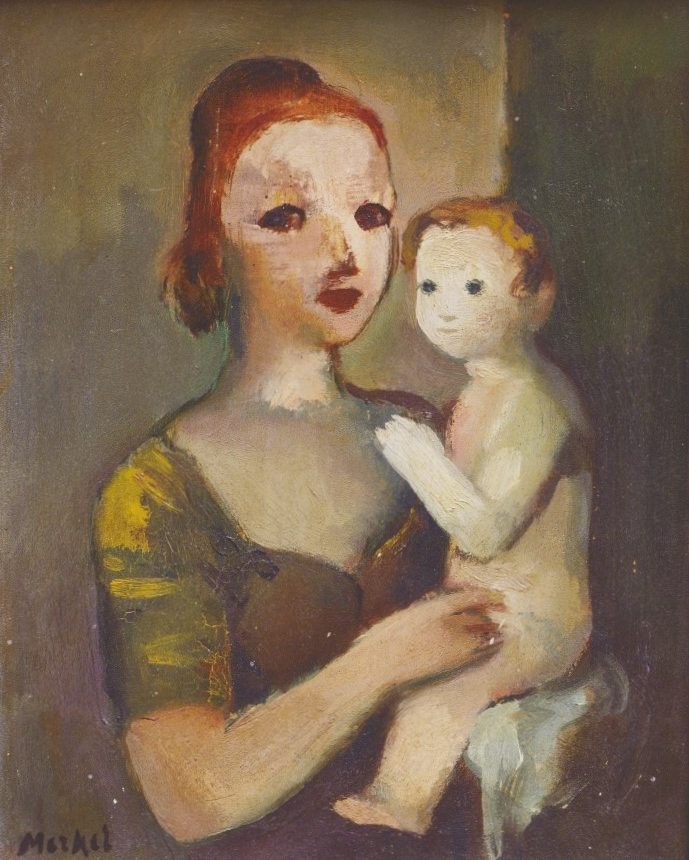Sigmund MENKÈS
January 3, 2019Béla MESZOLY
January 3, 2019Georges MERKEL (born Jerzy Merkel)
LWOW (GALICIA) 1881 – VIENNA 1976
Georges Merkel was born into a modest family. He earned his living by decorating apartments and began his artistic training at the School of Decorative Arts in Lodz with Josef Mehoffer and Stanislas Wyspianski. In 1903, thanks to a friend’s financial support, he enrolled at the School of Fine Arts in Krakow, and was awarded the silver medal two years later. He was attracted very early on to Paris, the city of great masters and classicism. He arrived in Paris in 1905 and lived there for three years before returning to Krakow. In 1909, he moved back to Paris and got married. During World War I, Merkel was enlisted in the Austrian army. He was seriously wounded in 1917, underwent brain surgery and risked blindness. In the interwar period, he lived in Vienna. In 1939, Merkel returned to France and took refuge in Montauban. After the Liberation, he went back to Paris and settled in Le Plessis-Robinson. He spent the last years of his life in Vienna.
Stories of Jewish Artists of the School of Paris 1905-1939
FRENCH-ENGLISH
Capitale des arts, le Paris des années 1905-1939 attire les artistes du monde entier. De cette période de foisonnement, un terme est resté, celui d'Ecole de Paris, qui recouvre une grande diversité d'expression artistique. Dans ce brassage dont Montparnasse est le creuset, un groupe se distingue : celui des artistes juifs venus de Russie, de Pologne et d'Europe centrale. Si leurs styles sont variés, un destin commun les rassemble : ils fuient l'antisémitisme de leur pays d'origine. Certains ont connu la célébrité dès les années 1920, tels Soutine, Lipchitz ou Chagall. D'autres n'ont pas eu le temps ou la chance d'y accéder. Près de la moitié a péri dans les camps de concentration nazis.
From 1905 to 1939, Paris attracted artists from all over the globe as the capital of the art world. This period of artistic proliferation became known as the School of Paris, and includes a great diversity of artistic expression. Within the teeming art world centred on Montparnasse, one group set itself apart: Jewish artists from Russia, Poland, and Central Europe. Although their styles were diverse, they shared the common fate of fleeing anti-Semitic persecutions in their home countries. Some became famous in the 1920s, such as Soutine, Lipchitz, and Chagall, while others did not have the time or the luck to gain renown. Nearly half of these artists died in Nazi concentration camps.





